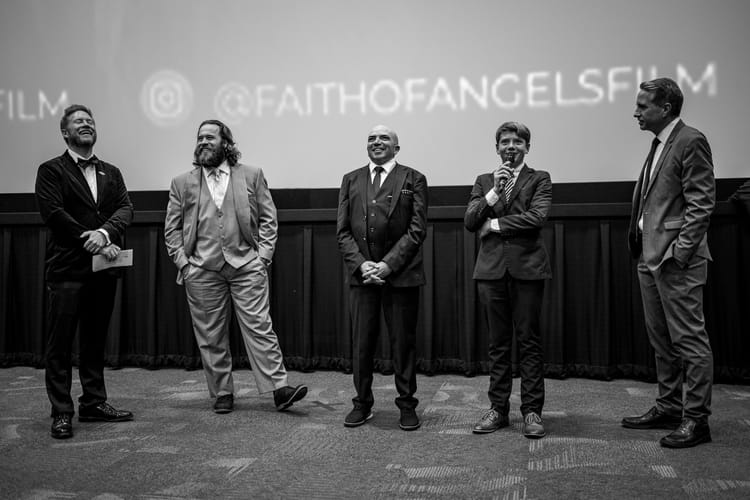Make Movies People Want To Buy

I recently heard a statistic that "subscription cycling" among Gen Z viewers—where you sign up for a service, binge a show, then cancel to move to the next platform—ballooned from 19% in 2019 to over 50% in 2024.
This emerged during a conversation about seismic industry shifts: music's analog-to-digital transformation in the 2000s, film's streaming revolution in the 2010s and 20s. The question remained: What's next?
What struck me was this fundamental truth: you can't control consumer behavior. You can attempt to shape, incentivize, or manipulate it, but if you're offering something audiences don't want, you're headed for a reckoning.

These images show “desire paths,” trails created when people ignore designed walkways to forge their own routes–the shortest path to what they want. What does this reveal about the “paths” we’ve built in the film industry?
We've architected an elaborate system viewers are actively circumventing. They don't want lifetime subscriptions to multiple platforms, just access to the cultural conversation—the shows and films everyone is discussing right now.
We've all felt that bewildering moment when a film we desperately want to watch seems to have vanished into the digital ether, unavailable on any platform. How is this possible in our era of supposed infinite access?
This fragmented landscape reveals a simple opportunity for indie filmmakers:
Make movies that people want to buy.
When we pivot from begging for streaming placement to creating films audiences want to own, we are no longer fighting consumer behavior. We are aligning with it. We are building our distribution along their desire paths.
Today's viewers want immediate access to quality. Our job is to make discovery frictionless and purchasing irresistible.
Every weekend—small sample size acknowledged—my family gathers for movie night. Where do we begin? Not Netflix or Prime, but our Apple TV library of purchased films. Before that, it was scanning our physical Blu-ray and DVD shelves.
We start with what we own because we've already voted with our wallets. These are films worth revisiting.
We only venture outward for specific titles when our collection fails us. If it has lasting value, we buy it. If we areuncertain, we rent or stream.
The first domino that sets off a powerful chain reaction is committing to make movies people want to buy:
- We elevate our craft. The bar rises from "watchable enough to click play" to "valuable enough to own." This applies to theatrical tickets or post-release purchases.
- We own the marketing. No more outsourcing audience-building to platforms that see our film as interchangeable content and own the audience relationship.
- We increase profit margins. Each purchase becomes more valuable, raising the lifetime value (LTV) of every customer. This shifts us from pure creatives to strategic business owners.
- We build direct audience relationships that create sustainable foundations for future projects.
- We create enduring assets rather than disposable content. We create films that reward repeated viewings rather than one-and-done experiences.
- We gain sovereignty from platform algorithms and distribution whims. Our destiny becomes ours to shape.
Movies people want to buy aren't mere content. They're appreciating assets with durable value.
This principle isn't just marketing copy. It's a strategic commitment to embed in our company's DNA: our website, mission statement, and operating documents.
Let's reject our role as content-fodder suppliers for streaming algorithms. Instead, let's create lasting films and sell them directly to the audiences who crave them.
Make movies people want to buy. It sounds deceptively simple, but it changes everything.






Member discussion